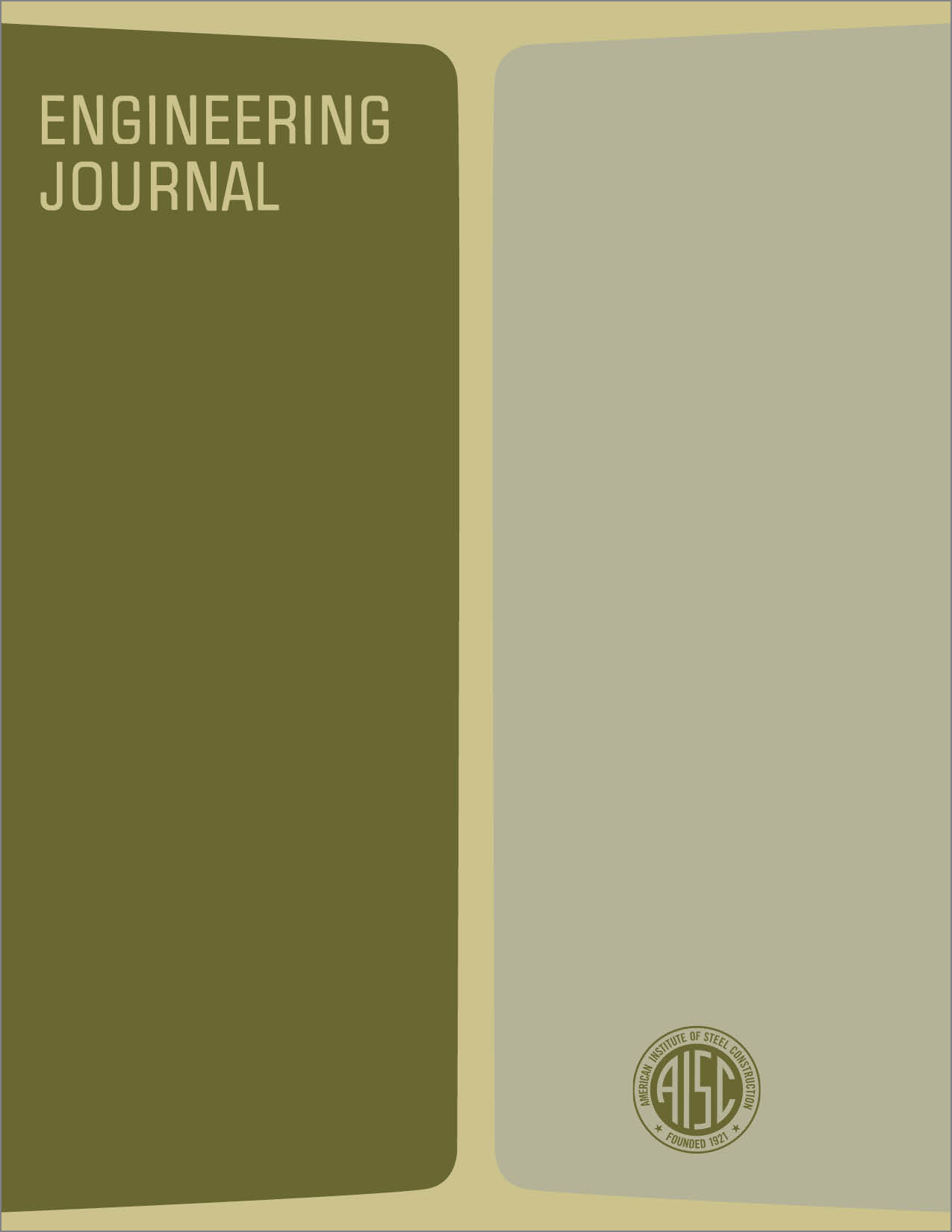Column Stability in Type 2 Construction
DOI:
https://doi.org/10.62913/engj.v3i2.52Abstract
Analysis of the stability of columns has become of increasing importance under the impetus of the AISC Specification. The discussion of "effective length" contained in the AISC Commentary makes reference to columns in continuous frames classified as Type 1 construction in the AISC Specification. Described herein is a method whereby the Commentary discussion is extended to include structures commonly designed as simply framed (Type 2 construction), but which rely upon the connection for frame action to resist lateral forces. The alignment chart provided by the Column Research Council offers a rapid and convenient method for evaluating the K factor for columns with rigid beam connections. Where structural connections are partially rigid, modification to this procedure must be made. Figure 1 illustrates the relationship between the deflected shape of the column and its effective length. Any additional rotation of the top of the column because of the incomplete (partial) rigidity of the connection increases the effective length. This is indicated in Fig. 1a by the higher position of the intersection of the extension to the elastic curve and the projection of the undeformed column axis.

